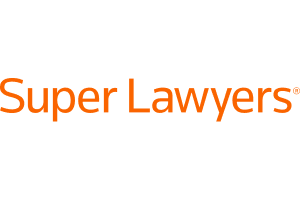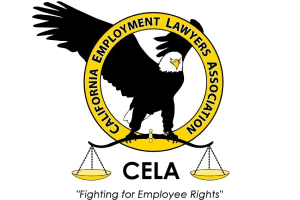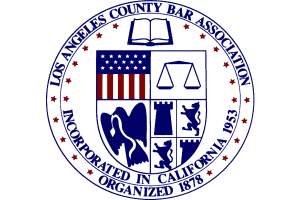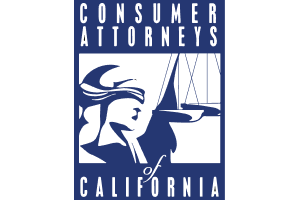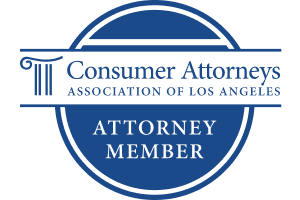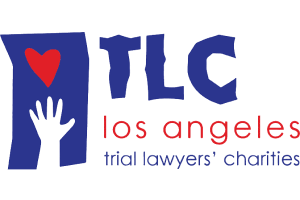Employee Rights
Wilmington, California
Wilmington, California is a neighborhood within the City of Los Angeles in the South Bay Region. Wilmington has approximately 55,000 residents. Wilmington shares the Port of Los Angeles with San Pedro, its neighbor to the west and south. The Port of Los Angeles is one of the world’s busiest commercial harbors. The Port of Long Beach and City of Long Beach lie along the Wilmington’s eastern border. The northern border is approximately described by Lomita Boulevard, on the other side of which lies the City of Carson. Wilmington was a separate city from 1863 to 1909, when it became part of the City of Los Angeles. Residential development in Wilmington began in the 1890s.
Port of Los Angeles
Wilmington is located along San Pedro Bay. San Padro Bay was a shallow, marshy area with small lakes, tidal flats, sand bars, and a two-acre rock outcropping. While seemingly ill-suited for use as a harbor, in 1871, Phineas Banning, known as the Father of Los Angeles Harbor, dredged a channel through San Pedro Bay to a depth of ten feet. The channel led to his dock. From there, goods were transported overland by horse or mule to Los Angeles, 20 miles distant. Stephen M. White also played a pivotal role in the formation of the Port of Los Angeles. White, a State Senator and later a United States Senator, orchestrated a campaign that led Congress in 1897 to declare San Pedro Bay the official port for Los Angeles as opposed to Santa Monica Bay. A breakwater for the port was built during this period. The City of Los Angeles created the Board of Harbor Commissioners in 1907, thereby officially founding the Port of Los Angeles. The importance of Port of Los Angeles increased with the opening of the Panama Canal in 1914.
Wilmington is now home to many port-related businesses associated with the shipping, warehousing, or logistics industries.
Avalon Boulevard
Avalon Boulevard is the main commercial thoroughfare in Wilmington and includes the historic commercial center of Wilmington. Many extant buildings in the historic commercial center date from the period of 1912 to 1931. Avalon Boulevard is the focal point for area shopping and recreational activities.
Kaiser Permanente South Bay Medical Center
While Wilmington and its surrounds are thought of as port-related communities, there are several large employers in the area not directly connected to operations at the Port of Los Angeles. Kaiser Permanente South Bay Medical Center is a 250-bed facility, which, along with 9 local Kaiser Permanente medical offices, has approximately 500 physicians and 3,500 staff.
Harbor-UCLA Medical Center
Harbor-UCLA Medical Center is a 570-bed facility operated by the County of Los Angeles and associated with the University of California, Los Angeles. A $1.695 billion Harbor-UCLA Medical Center Replacement Program is in the works. New buildings, structurally resilient to a major earthquake, will house medical services on a 72-acre campus. New construction will include a 468,000-square foot, 346-bed acute care inpatient tower and a 381,000-square foot parking structure.
Wilmington Oil Field
Wilmington is also a major producer of oil. In 1932, oil was first produced from Wilmington Oil Field. The field’s footprint covers territory in Wilmington and surrounding areas. Only two other oil fields in the United States have produced more crude oil than the Wilmington Oil Field. To date, over two billion barrels of oil have been recovered from over 6,000 wells. While a majority of the reserves in the field have already been extracted, Wilmington Oil Field continues to produce oil, with over 1,500 active wells remaining. This large source of crude oil led to the construction of a number of large refineries in the area.
Harbor Generating Station
The growth of the Port of Los Angeles necessitated the development of infrastructure specific to the Port, including the generation of electricity. For example, the Los Angeles Shipbuilding and Dry Dock Company, which opened a shipbuilding plant at the Port of Los Angeles in 1917, used tremendous amounts of electricity. According to one estimate, by 1924, the area was using 16 times more electricity than it had just seven years earlier. However, for a variety of reasons, an electricity generating plant designed specifically for the Port of Los Angeles did not come online until 1949. The plant, which is known as the Harbor Generating Station, is located in Wilmington and is owned and operated by the Los Angeles Department of Water and Power. The Plant uses gas to generate electricity. In the 1990s, the plant was retooled from a steam-powered, water-cooled facility to a natural gas-powered, air-cooled operation.
Parks
Adjacent to Wilmington is Ken Malloy Harbor Regional Park, which is the third largest park in the City of Los Angeles park system. An important feature of the park is the 45-acre Machado Lake, which is frequented by over 300 species of migratory birds. The park also offers a 9-hole golf course, walking paths, playgrounds, barbecue pits, and picnic tables.
Wilmington Waterfront Park, at 30-acres, is the largest park within Wilmington. A nine-block-long pedestrian and bicycle promenade runs the length of the park. Wilmington Waterfront Park is part of the Wilmington Waterfront plan that aims to draw more visitors and businesses to the area.
Other parks include East Wilmington Greenbelt Pocket Park, Wilmington Town Square Park, and Drum Barracks Park.
Wilmington Cemetery
Wilmington Cemetery, established in 1857, is one of the oldest cemeteries in the Los Angeles area and is the oldest active cemetery in the County of Los Angeles. Wilmington Cemetery now covers 10.2 acres. In 1963, Wilmington Cemetery became a publicly operated facility.
Banning Museum
Banning Museum features the 23-room Greek Revival style residence of Phineas Banning built in 1864. The City of Los Angeles purchased the residence, stagecoach barn, and 20 surrounding acres in 1927. Phineas Banning residence is a City, State, and National Historic Landmark.
Drum Barracks Civil War Museum
During the American Civil War, a military post was established in Wilmington. Originally a tent camp called Camp Drum, the military post was later moved to a more elevated site about one half mile away. Known as the Drum Barracks military post, the facility consisted of about 22 wooden buildings on 60 acres. Even though California was part of the Union, due to the large number of Southerners who had moved to Southern California over the previous decade, Abraham Lincoln only received 25% of the Los Angeles vote in the presidential election of 1860. When the Civil War broke out there were fears the Confederacy would gain control of Southern California. Camp Latham along Ballona Creek located in what is now the City of Culver City was established in part to ensure that a Confederate takeover would not occur. Camp Latham was then abandoned in favor of siting the military port closer to San Pedro Bay (the area’s main port even in those early days), and Camp Drum was established. The strong military presence had the desired effect, confining the expression of Confederate sympathies in the area to a few public demonstrations and displays of the Confederate flag. Drum Barracks Civil War Museum is housed in one of only two remaining wooden buildings from the military post. The structure, which served as the Junior Officers’ Quarters, dates from 1862. Drum Barracks military post closed in 1871.
Banning Park
Banning Park Historic Preservation Overlay Zone was once part of the estate of Phineas Banning. In 1927, William Wrigley Jr., chewing gum magnate, purchased a portion of the Banning estate, now known as Banning Park, and developed a residential area on the tract. Banning Park features architectural cohesiveness thanks in part to architect Sid Spearin, who dubbed the development the “Original Court of Nation,” and whose residential designs on Period Revival styles included American Colonial, Dutch, Spanish, and Tudor Revival.
Contact Us
We represent workers concerning a variety of employment claims. If your employer or former employer has violated your rights, call the experienced employment attorneys at Kokozian Law Firm, APC or Contact Us via our online form. We advance all costs. No recovery, no fee.


